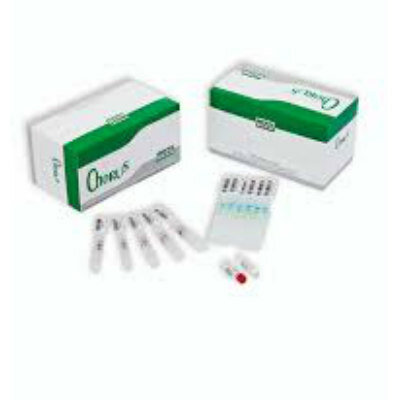Nanoparticle Technology Rehabilitates Abandoned Anticancer Drugs
By LabMedica International staff writers
Posted on 17 May 2012
Cancer researchers have used nanoparticle technology to reexamine potentially useful anticancer drugs that had failed in clinical trials due to problems of toxicity, stability, or solubility.Posted on 17 May 2012
In a proof-of-concept study investigators at the University of North Carolina (Chapel Hill, USA) formulated a nanoparticle version of the drug wortmannin. Wortmannin is a known and potent phosphoinositide-3-kinase (PI3K) inhibitor. PI3K activates an important cell survival-signaling pathway, and constitutive activation is seen in ovarian, head and neck, urinary tract, cervical, and small cell lung cancer. PI3K signaling is attenuated by the phosphatase activity of the tumor suppressor PTEN that is absent in a number of human cancers. Inhibiting PI3K presents the opportunity to inhibit a major cancer cell survival-signaling pathway and to overcome the action of an important deleted tumor suppressor, providing antitumor activity and increased tumor sensitivity to a wide variety of drugs.
Although wortmannin was a highly promising anticancer drug, its successful preclinical studies did not translate into clinical efficacy because of deficiencies such as high toxicity, low stability, and low solubility.
In the current study the investigators engineered a nanoparticle formulation of wortmannin and demonstrated that this formulation had higher solubility and lower toxicity compared to native wortmannin. To establish the clinical translation potential of the nanoparticle drug, they evaluated its potential as a radiosensitizer in vitro and in vivo.
Results published in the April 30, 2012, online edition of the journal Proceedings of the National Academy of Sciences of the USA (PNAS) revealed that nanoparticle wortmannin was a potent radiosensitizer and was significantly more effective than the commonly used radiosensitizer cisplatin in cultures of three different cancer cell lines. The mechanism of action of nanoparticle wortmannin radiosensitization was found to be through the inhibition of DNA-dependent protein kinase phosphorylation. Nanoparticle wortmannin was shown additionally to be an effective radiosensitizer in vivo using two mouse xenograft cancer models.
“We found that the nanoparticle formulation of wortmannin decreased toxicity and increased stability, solubility, and effectiveness,” said senior author Dr. Andrew Z. Wang, professor of radiation oncology at the University of North Carolina. “Additionally, nanoparticle wortmannin can improve the efficacy of radiotherapy dramatically and is more effective than the most commonly utilized chemotherapeutics.”
“Drug development is a difficult and expensive process,” said Dr. Wang. “For a cancer drug to make it to clinical use, it not only has to be effective against cancer cells, but also needs to have low toxicity, good stability, and good solubility. Many promising drugs such as wortmannin failed clinical development because they failed one or more of these requirements. Nanoparticle drug delivery is a breakthrough technology and has the ability to overcome these limitations. Our study is a proof of principle to demonstrate that nanoparticles can renew the clinical potential of many of these abandoned and forgotten drugs.”
Related Links:
University of North Carolina













